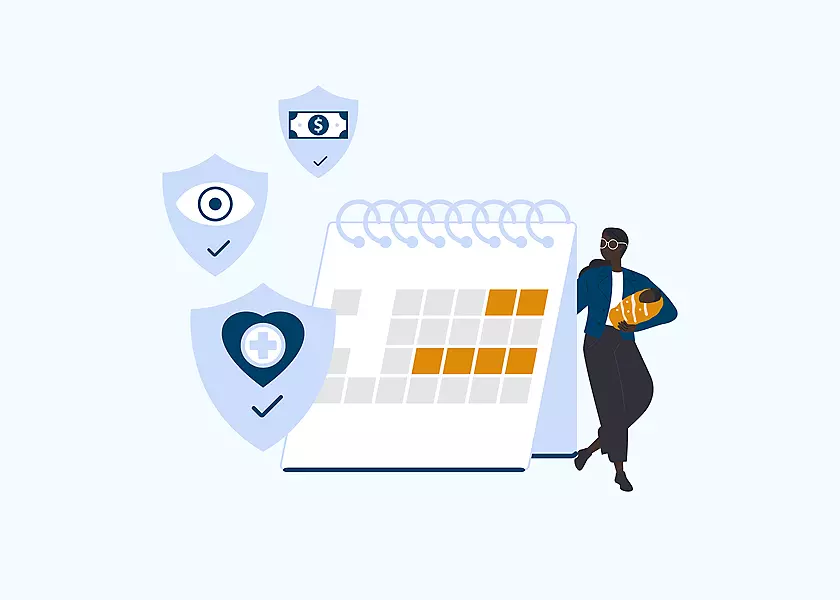Hiring advice
Get the tips and resources you need to improve your recruitment efforts and land the talent your business needs to succeed.
6 hiring process steps to never skip over
When a job vacancy becomes available in your business, building an effective recruitment strategy is key to a successful hire. This article shares six hiring process steps to ensure you cover.
 Read more
Read more
How to reduce first impression bias during the hiring process
Our unconscious bias often gets in the way during recruitment. Read on for five practical ways you can reduce first impression bias during the hiring process.
 Read more
Read more
The 3 most common hiring mistakes
Never underestimate the importance of developing a strong hiring technique to avoid losing time. Watch out for these common hiring mistakes.
 Read more
Read more
More hiring tips
Read more
2025 Salary Guide
Access the free 2025 Robert Half Salary Guide for Australia to access salary ranges for 200+ roles across the Sydney, Melbourne, Brisbane and Perth region.
 Research and insights
Hiring advice
How do CFOs leverage technology for business growth
When it comes to leveraging technology for business growth, new research shows that CFOs are taking a more assertive role in these decisions. Discover how technology has changed the role of the CFO.
Research and insights
Hiring advice
How do CFOs leverage technology for business growth
When it comes to leveraging technology for business growth, new research shows that CFOs are taking a more assertive role in these decisions. Discover how technology has changed the role of the CFO.
 The experience and qualities needed to be successful in recruitment
There’s no better way to understand how to be successful in recruitment than directly from our recruiters, and the people who recruit recruiters, themselves!
The experience and qualities needed to be successful in recruitment
There’s no better way to understand how to be successful in recruitment than directly from our recruiters, and the people who recruit recruiters, themselves!
 Is experience more important than education for aspiring CFOs?
There is no standard path to C-suite success. But, is experience more important than education? Unpack this debate, explore the importance of continuous learning and mentorship, and uncover the secrets to becoming a successful CFO.
Is experience more important than education for aspiring CFOs?
There is no standard path to C-suite success. But, is experience more important than education? Unpack this debate, explore the importance of continuous learning and mentorship, and uncover the secrets to becoming a successful CFO.
 How to choose the right business and project management partner for your organisation
With organisational success on the line, choosing the right business and project management partner is a high-stakes operation. Read on to see how to make the right choice.
How to choose the right business and project management partner for your organisation
With organisational success on the line, choosing the right business and project management partner is a high-stakes operation. Read on to see how to make the right choice.
 13 career opportunities in information technology to consider
Robert Half Director Tom Ward lays out the 13 exciting career opportunities in information technology and highlight the benefits you shouldn’t ignore, as well as the misconceptions you should.
13 career opportunities in information technology to consider
Robert Half Director Tom Ward lays out the 13 exciting career opportunities in information technology and highlight the benefits you shouldn’t ignore, as well as the misconceptions you should.
 Don’t neglect business succession planning, it will change your fortunes
Discover why business succession planning is imperative for high-performing Australian organisations. And, why succession goes beyond leadership, and right to the heart of stakeholder confidence.
Don’t neglect business succession planning, it will change your fortunes
Discover why business succession planning is imperative for high-performing Australian organisations. And, why succession goes beyond leadership, and right to the heart of stakeholder confidence.
 What to include in a CEO job description
A CEO job description needs to attract the right leader by balancing measurable criteria like education and career breadth with essential personal qualities and cultural fit. Find out more.
What to include in a CEO job description
A CEO job description needs to attract the right leader by balancing measurable criteria like education and career breadth with essential personal qualities and cultural fit. Find out more.
 What makes a good business leader in 2025?
Our experienced executive search team explore what sets great leaders apart, from strategic clarity to adaptability and smart use of AI. Read more today.
What makes a good business leader in 2025?
Our experienced executive search team explore what sets great leaders apart, from strategic clarity to adaptability and smart use of AI. Read more today.
 How to counteract high staff turnover in leadership roles
Kevin Jarvis, Managing Director responsible for the Brisbane area, discusses strategies for organisations to reduce leadership turnover and strengthen retention at the top levels of management.
How to counteract high staff turnover in leadership roles
Kevin Jarvis, Managing Director responsible for the Brisbane area, discusses strategies for organisations to reduce leadership turnover and strengthen retention at the top levels of management.
 Three behavioural leadership skills that really matter
Gareth Whalley, Managing Director, explores the essential behavioural skills that define effective leaders and drive stronger team performance.
Three behavioural leadership skills that really matter
Gareth Whalley, Managing Director, explores the essential behavioural skills that define effective leaders and drive stronger team performance.
